#net-zero emissions strategies
Explore tagged Tumblr posts
Text
Jamshedpur Hosts CII Jharkhand Green Conclave 2024
Industry leaders gather to discuss sustainability and net-zero emissions strategies CII Jharkhand Green Conclave 2024 brings together experts to explore sustainable practices and green technologies. JAMSHEDPUR – The CII Jharkhand Green Conclave 2024 gathered industry leaders to discuss sustainability and green technologies at Jamshedpur. The Confederation of Indian Industry (CII) organized the…
#ब��जनेस#business#CII Jharkhand Green Conclave#Confederation of Indian Industry event#environmental stewardship in India#ESG integration for MSMEs#future-ready green ecosystem#green technology conference#industry leaders on sustainability#net-zero emissions strategies#sustainability in Jamshedpur#Sustainable Business Practices
0 notes
Text
Five Global Trends in Business and Society in 2025 – 1 – Asrar Qureshi’s Blog Post #1063
#Asrar Qureshi#Blogpost1063#Carbon Emissions#Climate Change#Green Markets#Impact on Business#Net Zero#Pharma Veterans#Public Private a Partnership#Strategies
0 notes
Text
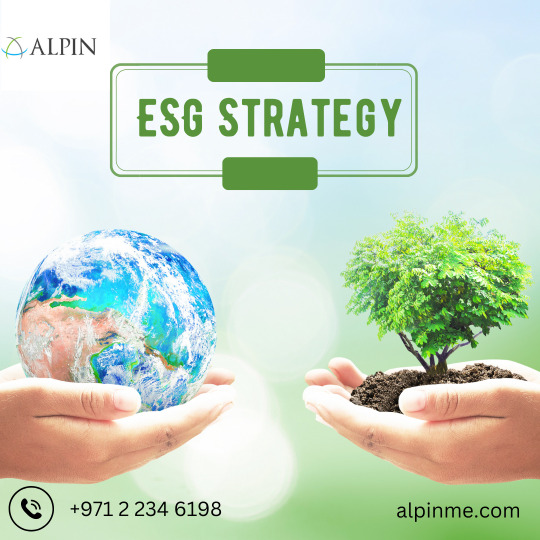
Alpin has grown to encompass some of the world’s leading voices and thought leaders in the field of sustainable development and climate change, so much so that what started off as a niche advisory service has grown into a holistic service offering Sustainability Reporting that incorporates all of the elements and aspects that would play a role in creating a sustainable development or policy. The essence of our work lies in our flexibility, giving us the ability to match the very best consultants to your project’s needs, no matter the size or sector. We draw from a trusted pool of highly experienced, regionally based project managers as well as Decarbonization Strategies to create a winning team.
#carbon emissions calculations#decarbonization strategies#epd#green building certification#sustainability#Environmental Product Declarations#Sustainability Reporting#Acoustic Engineering#LEED Certification#WELL Certification#Independent Commissioning Authority#Commissioning Management#Net Zero Advisory#ESG Advisory
0 notes
Text
Exploring Environmental Product Declarations and ESG Reporting in Acoustic Engineering for Sustainability

In the realm of sustainable development and environmental responsibility, the integration of Environmental Product Declarations (EPDs) and ESG (Environmental, Social, and Governance) reporting plays a crucial role. This article delves into how these frameworks are applied within the context of acoustic engineering, highlighting their impact on sustainability reporting.
Introduction to Environmental Product Declarations
Environmental Product Declarations, commonly referred to as EPDs, are standardized documents that communicate transparent and verified information about the environmental impact of a product or system throughout its life cycle. They provide valuable insights into the environmental performance of products, helping consumers and stakeholders make informed decisions. EPDs are based on Life Cycle Assessment (LCA) methodologies, which assess environmental impacts from raw material extraction to disposal or recycling.
ESG Reporting and Its Importance
ESG reporting refers to the practice of organizations disclosing their performance in environmental, social, and governance aspects. It provides stakeholders with a comprehensive view of a company’s sustainability efforts beyond financial metrics. ESG factors are increasingly influencing investment decisions and corporate strategies, emphasizing the importance of transparent reporting practices.
Sustainability Reporting in Acoustic Engineering
Acoustic engineering focuses on managing noise and vibration levels across various environments, including buildings, transportation, and industrial facilities. Integrating sustainability principles into acoustic engineering involves minimizing noise pollution and ensuring energy efficiency throughout the life cycle of acoustic products and systems.
Environmental Considerations in Acoustic Engineering
When developing acoustic solutions, environmental considerations begin with the selection of materials. EPDs help acoustic engineers assess the environmental impact of materials used in products such as soundproofing materials, acoustic panels, and noise barriers. By choosing materials with lower carbon footprints and reduced toxicity, engineers contribute to sustainable building practices.
Life Cycle Assessment (LCA) in Acoustic Product Development
LCA is a key tool in evaluating the environmental footprint of acoustic products. It considers factors like energy consumption, emissions, and resource use from raw material extraction to manufacturing, installation, use, and disposal. By conducting LCAs and obtaining EPDs for their products, acoustic engineers can identify opportunities for improvement and innovation in sustainability.
Case Studies: Implementing EPDs and ESG Reporting
Several companies in the acoustic engineering sector have embraced EPDs and ESG reporting to enhance their sustainability credentials. For instance, a manufacturer of acoustic panels conducted an LCA to develop EPDs that disclose the environmental impact of their products. Simultaneously, they incorporated ESG criteria into their corporate reporting, demonstrating commitments to energy efficiency and waste reduction.
Challenges and Opportunities
While EPDs and ESG reporting offer significant benefits, challenges remain in their implementation across the acoustic engineering industry. These challenges include data collection complexities, standardization issues, and the need for continuous improvement in sustainability practices. However, overcoming these challenges presents opportunities for innovation and differentiation within the market.
Future Trends and Innovations
Looking ahead, the future of acoustic engineering lies in integrating advanced materials and technologies that further minimize environmental impacts. Innovations such as biodegradable acoustic materials, renewable energy-powered manufacturing processes, and smart acoustic solutions equipped with energy-efficient sensors are paving the way for a more sustainable built environment.
Conclusion
Environmental Product Declarations and ESG reporting are integral to advancing sustainability in acoustic engineering. By adopting these frameworks, companies can mitigate environmental impacts, meet regulatory requirements, and enhance stakeholder trust. As the industry evolves, continued collaboration and innovation will drive meaningful progress towards a more sustainable future for acoustic solutions worldwide.
In summary, Environmental Product Declarations and ESG reporting are not merely compliance measures but strategic tools that enable acoustic engineers to contribute positively to environmental sustainability while meeting market demands and stakeholder expectations.
#Environmental Product Declarations#ESG Reporting#Sustainability Reporting#Acoustic Engineering#Green Building Certification#Carbon Emissions Calculations#Decarbonization Strategies#Independent Commissioning Authority#ESG Advisory#Net Zero Advisory#LEED Certification#WELL Certification#Commissioning Management
0 notes
Text
Seizing the $12.7 Trillion Investment Opportunity: India's Path to a Net-Zero Economy by 2050

In an era where the world grapples with the daunting challenge of climate change, India emerges as a beacon of hope, embracing an ambitious journey towards a net-zero economy by 2050. The monumental significance of this endeavor cannot be overstated, with the New Energy Outlook: India report by BloombergNEF estimating an extraordinary investment opportunity worth $12.7 trillion. This path not only underscores India's commitment to sustainability but also presents an unparalleled prospect for strategic consulting and business leaders to shape a greener, more prosperous future.
The BloombergNEF report illuminates two distinct scenarios that delineate India's energy transition trajectory, shedding light on both the obstacles and prospects that lie ahead. The Economic Transition Scenario (ETS), characterized by an economics-driven transition, strives to align with a global temperature rise of 2.6 degrees Celsius by 2050. While commendable progress is made towards energy independence and decarbonization, this path falls shy of the 2050 goals. On the other hand, the Net Zero Scenario (NZS) envisages a collaborative effort between the government and the private sector, with robust support, leading to a net-zero emissions economy by 2050. Crucially, this approach aims to achieve this without relying on unproven technologies, positioning India to attain mid-century energy independence cost-effectively.
India's dedication to clean energy is exemplified by its remarkable achievement of adding 53 gigawatts of solar and wind energy between 2018 and 2022. Notably, in 2022 alone, a staggering 16 gigawatts of utility-scale solar capacity was installed. However, despite these strides, solar and wind power collectively constitute less than a quarter of the nation's total energy generation capacity. The elephant in the room remains the continued dominance of coal, which not only hampers progress towards decarbonization but also stands as the primary contributor to India's greenhouse gas emissions.
This paradigm presents an unprecedented investment opportunity, offering a chance for businesses, investors, and strategic consultants to play a pivotal role. As India accelerates its transition to cleaner energy sources, the need for strategic guidance and innovative solutions becomes paramount. Business leaders can harness this opportunity by investing in renewable energy projects, developing sustainable technologies, and collaborating with the government to drive impactful policy changes. The transformational potential of this investment landscape cannot be overstated, as it aligns economic growth with environmental stewardship.
Strategic consulting firms find themselves uniquely positioned to shape India's energy landscape. By providing expert insights, data-driven analysis, and tailored strategies, these firms can guide both public and private sector entities towards informed decisions that expedite the energy transition. As India treads the path to a net-zero economy, strategic consultants can facilitate the alignment of short-term economic objectives with long-term sustainability goals, fostering a holistic approach to development.
In conclusion, India's resolute march towards a net-zero economy by 2050, underscored by the BloombergNEF report's findings, ushers in an unparalleled investment opportunity valued at an astonishing $12.7 trillion. The dichotomy between the Economic Transition Scenario and the Net Zero Scenario reveals the challenges and triumphs that lie ahead, with the latter offering a compelling blueprint for success. As solar and wind power gain ground but coal retains its grip, the investment potential in India's clean energy transition becomes increasingly evident.
For strategic consulting firms and business leaders, this juncture presents a clarion call to drive change, spearheading investments that bolster clean energy infrastructure, technological innovation, and policy advocacy. By seizing this historic opportunity, these stakeholders can not only contribute to India's sustainable future but also set a precedent for global endeavors in combating climate change. As India paves the way, the potential rewards for those who invest wisely and think boldly are immeasurable.
This post was originally published on: Foxnangel
#business growth#business opportunities in india#carbon emissions#Fox&Angel#FoxNAngel#Growing economy#Invest in India#investment opportunities in India#net zero emissions#strategy consulting
0 notes
Text
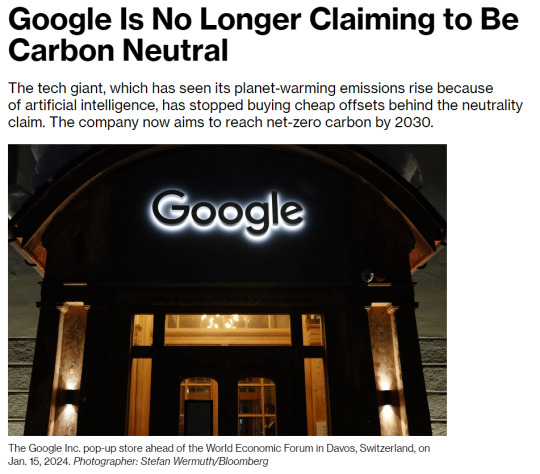
Google has ended its mass purchase of cheap carbon offsets and thus stopped claiming that its operations are carbon neutral, according to the tech giant’s latest environmental report. The company now aims to reach net-zero carbon emissions by 2030. The Alphabet Inc. unit has claimed that it’s been carbon neutral in its operations since 2007. The status was based on purchasing carbon offsets to match the volume of emissions that were generated from its buildings, data centers and business travel. But in its latest report, the company states: “Starting in 2023, we’re no longer maintaining operational carbon neutrality.”
[...]
The changes to its carbon credits purchase strategy have coincided with Google and Big Tech’s push on artificial intelligence, which a Bloomberg News investigation has shown is extremely resource intensive. As a result, Google’s total planet-warming emissions in 2023 are 48% higher than 2019. In that period, its total energy consumption has doubled. It’s a similar story for Microsoft, which has seen primarily its AI activities cause emissions to rise by 30% relative to 2020, even as it still aims to be carbon negative by 2030.
8 July 2024
570 notes
·
View notes
Text
In its report entitled Strategies for Affordable and Fair Clean Energy Transitions, the IEA said that more investment would be needed if the world was to achieve the 2050 net-zero emissions target. The operating costs of the global energy system are expected to be cut by more than half over the next decade compared to a transition trajectory based on today's policy settings, with the end result being an affordable and fairer energy system for consumers.
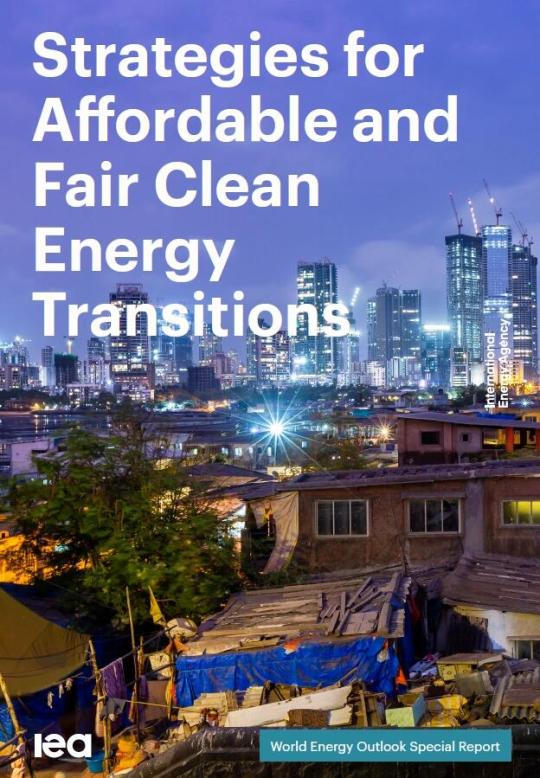
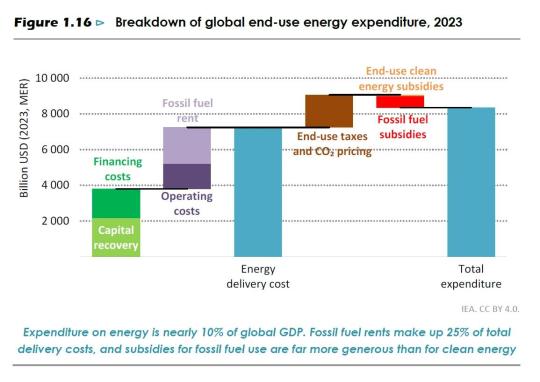
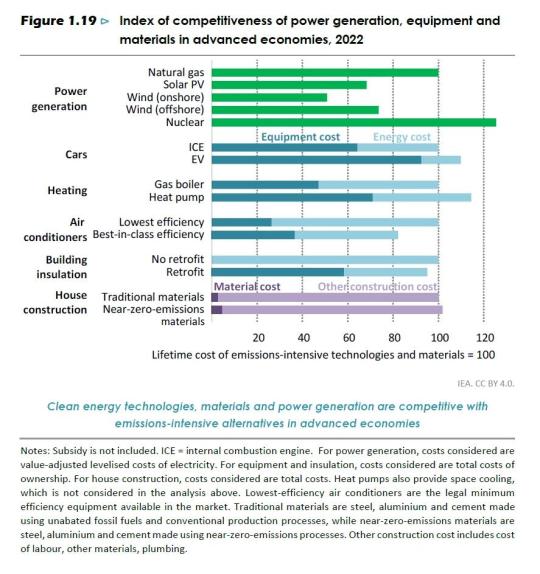
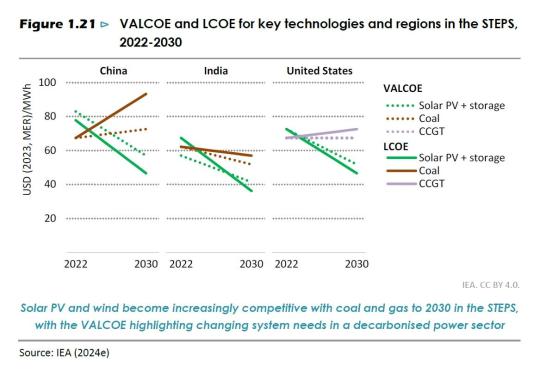
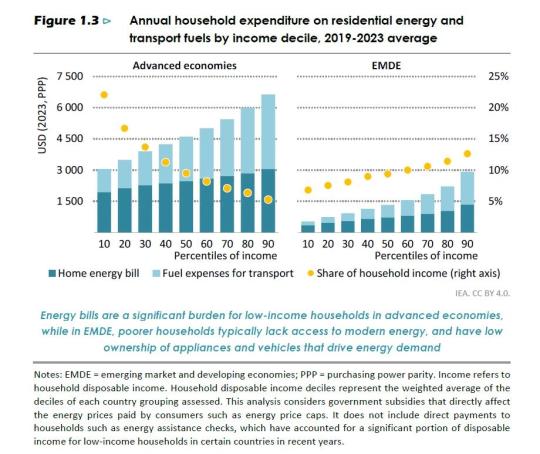
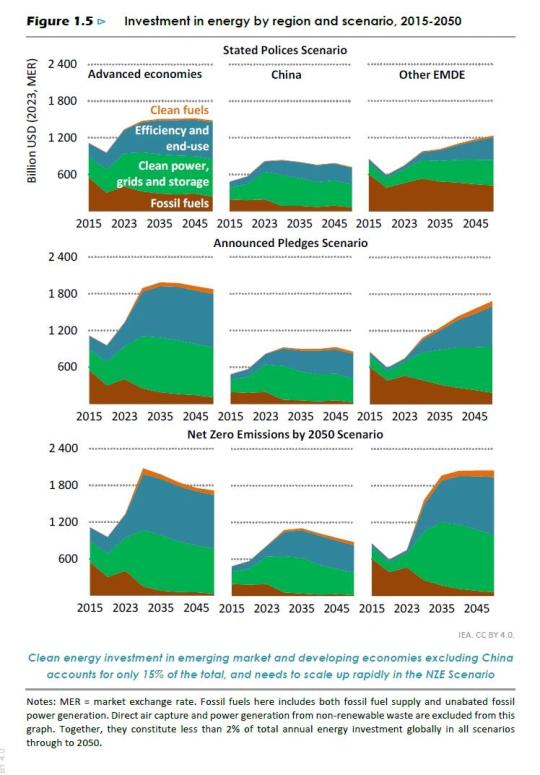
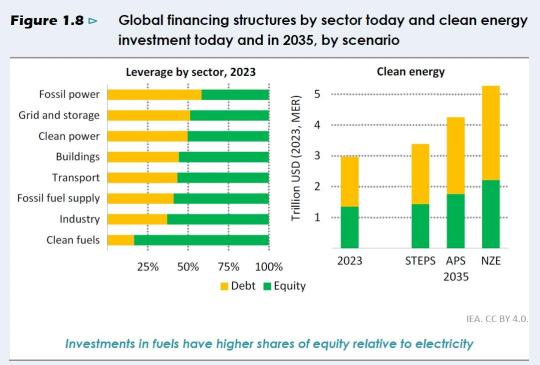
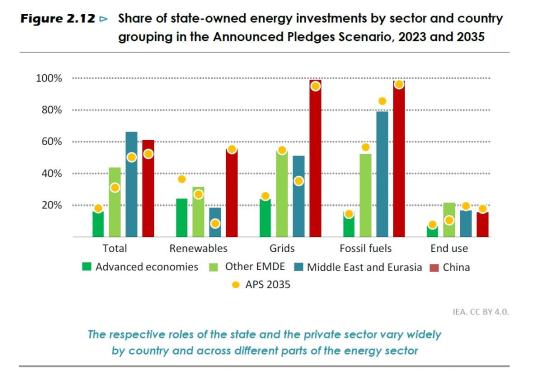
178 notes
·
View notes
Text
The U.K.'s last coal-fired power plant was to close permanently on Monday — bringing an end to 140 years of reliance on the fossil fuel to generate electricity in Britain. The move will make the U.K. the first major global economy to completely phase out coal as an energy source.
The Ratcliffe-on-Soar Power Station, located near a small village in southern England, was to close its doors for the last time at midnight local time. The power station has been generating electricity since 1967 and "played a key role in keeping the nation's lights on," its parent company Uniper said in a statement Monday.
"Since commissioning it has produced enough energy to make more than 21 trillion cups of tea and its 2GW capacity is enough to power two million homes," the company said.
Peter O'Grady, the plant's manager, told CBS News it was "an emotional day."
"When I started my career 36 years ago, none of us imagined a future without coal generation in our lifetimes. I am incredibly proud of what we've achieved together over the years and to be part of this energy milestone as the country focuses on a cleaner energy future," he said.
The move sees the U.K. make good on one of the environmental pledges made by the government as part of a wider strategy to combat climate change and achieve net-zero greenhouse gas emissions by 2050. Coal is considered the single most damaging fossil fuel for the environment, according to Greenpeace, as it releases more carbon dioxide than oil or gas. Coal also produces mercury and arsenic, and small particles of soot which contribute to air pollution.
Thirteen countries have already phased out coal as a source of energy, according to independent climate think tank Ember, but Britain will be the only member of the G7 group of economically advanced, democratic nations to do so thus far.
In the G7's largest economy by a significant margin, the U.S., the Department of Energy acknowledges that coal is still "used to generate a significant chunk of our nation's electricity" — about 16% of the total share in 2023, according to the Energy Information Administration.
U.K. Energy Minister Michael Shanks said in a statement sent Monday to CBS News that the closure of the Ratcliffe power station "marks the end of an era, and coal workers can be rightly proud of their work powering our country for over 140 years."
"The era of coal might be ending, but a new age of good energy jobs for our country is just beginning," Shanks said.
The first coal plant in Britain went online in 1882, when Thomas Edison's Holborn Viaduct coal plant started generating electricity for public use. It was a first-of-its-kind station, and it burned enough coal to provide energy to light 1,000 lamps in the City of London.
Despite efforts to make the industry cleaner, the fundamentals of coal-fired electricity generation have remained largely unchanged since Edison's company fired up its boilers. The process involves burning the fossil fuel to heat water to create steam, which spins a turbine to produce electricity.
44 notes
·
View notes
Text
It's often said, as a truism, that while climate change is caused by systems, your individual choices can still make a difference, but might not actually be true- not just that you are small, but that the difference your consumption makes is actually zero.
Standard economic analysis
The standard economic analysis is that if you buy more carbon-intensive goods, that has two effects: it increases the total quantity of carbon-intensive goods sold, and it increases the price of carbon-intensive goods (only marginally, because you are small).
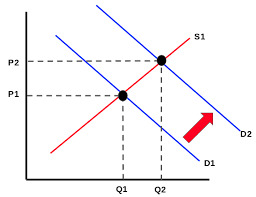
This means that while you buying one unit of carbon-intensive goods doesn't increase the amount of carbon-intensive goods as sold by one, it still increases them, and the amount it increases it by depends on the price elasticities of demand and supply (i.e. the slopes of the curves). If supply is very inelastic, we expect it to make close to 0 difference, and if demand is very inelastic we expect it to make an almost one-for-one difference. Suppose PED = PES and you emitted one extra tonne of CO2, the net effect of that is only an extra half tonne of CO2.
Aside: do these diagrams actually work? Yes. This result seems counterintuitive: the price of electricity isn't going to be put up just because you used more electricity this year, so it isn't going to result in others using less - there will be no offset. And this is correct, the world comes in discrete changes. But if enough people use more electricity, prices will go up, and you have no way of knowing whether you're the one who'll push it over the edge or raise the price of electricity from 29p to 30p. So we just look at averages, and on average you will raise prices by the amount shown on this diagram (i.e. very small, because you are very small, but enough to offset an amount of consumption that matters for our purposes).
Accounting for the government
But this standard economic analysis takes place in a policy vacuum. I mean, the same welfare effect would also hold if the government's climate policy was optimal because something something envelope theorem, but the government's policy is ummmm not optimal. In any country. Governments are not trying to set a socially optimal rate of carbon tax (which would be crippling to many industries) they are trying to do something more like reduce emissions enough to satisfy an electorate that doesn't care much, and no further, because they don't want to shrink the economy.
In an idealised version of this strategy, individual actions actually have 0 effect, regardless of PED or PES, because of the policy feedback mechanism: a British person emits one less tonne of CO2 so the UK government go 'oh look an extra tonne of CO2 we can emit without exceeding our internal targets' and spend less on mitigation to cancel it out.
Whilst your individual effect is small and unlikely to be noticed by policymakers, many people's changes will be noticed, and your emissions might be the straw that broke the camel's back, so we can treat the government as if their targets are responding to your individual emissions, just like in the aside. Note it isn't the official targets that matter, but how much governments privately feel they can get away with.
If the government are decided to emit 500MTe, then 500MTe are going to be emitted by someone, regardless of if you're the one doing it. You didn't help the Bangladesh farmer who's losing their livelihood because of harsher monsoon seasons, you just helped Clyde who wants to pay less tax on his SUV.
This argument hinges on this policy feedback mechanism actually being one-for-one, which we don't know, and which is fundamentally an empirical question. Specifically in the long-run. I'm sure it's not actually one-for-one- and if we model the government as maximising some utility function of economy and environment, it can't be.
We would also need to multiply this 'do your actions have purpose (because government is a fuck)' coefficient by the 'do your actions have purpose (because markets is a fuck)' coefficient to find out the actual effect of your actions. The crux of my argument is that the government's fuck coefficient is likely to be very small.
What is the government's fuck coefficient?
The long-run government fuck coefficient is built up over years of repeatedly adjusting policy to look more like what the government wanted to do anyway: if the government undershoots their carbon budget one year, the government will want to take that as license to emit more the next year, and whilst this won't be one for one- it might be quite small- over many years it will add up to mean emissions were basically what they would have been anyway.
Policy and emissions are slow to adjust- maybe a year after you reduced emissions by a tonne, policy change adjustments have only offset it by 10%, leaving a government fuck coefficient of 0.9 which seems pretty good (it means you had 90% as much effect as you thought your were having). Then the next year the government has 0.9 extra tonnes in their budget, and again their policy only offsets 10% of that, leaving a government fuck coefficient of 0.81 after 2 years. This continues year after year, so that in 30 years time, the government fuck coefficient is 0.042- i.e. you think you've saved a tonne of CO2, but because of the policy feedback mechanism, your net effect is only 42kg. Lets call this 10% figure the government fuck decay rate (GFDR).
Maybe the GFDR is lower than that, which would mean your individual consumption has more impact for longer. But as long as this GFDR is constant over time, your impact exponentially decays over time. The government fuck coefficient goes to zero. Remember, this isn't your effect on annual emissions decaying over time, it's your effect on cumulative emissions - this means your individual actions really are being undone. Not that annual emissions adjust back to the status quo but cumulative emissions do.
The government fuck coefficient after t years is (1-GFDR)^t
Self criticism like some kind of Maoist
The one weak point in this analysis I can see is it assumes governments' emission preferences care about cumulative emissions, not just annual emissions - i.e. that governments will think they can get away with doing less this year because they did more last year, or ten years ago. This is what gives a GFDR that isn't 0. If they largely don't think like this, the GFDR could be way less than 0.1 per year, leading to a government fuck coefficient that isn't near 0 even decades in the future (and what really matters is what the effect is decades in the future when hopefully governments will doing the right amount of mitigation, at which point there is no more decay).
The GFDR might also decrease over time, as after a certain amount of time historical emissions may basically be considered water under the bridge.
But if the GFDR is anything close to 0.1, we have to accept that, bizarre as it seems, saving energy today doesn't actually result in there being less carbon in the air in 50 years.
This doesn't mean we should do nothing, but it means our actions should be entirely focused on shifting government preferences, rather than on changing consumption habits. Assuming my analysis is correct.
40 notes
·
View notes
Text
The Biden administration on Wednesday issued one of the most significant climate regulations in the nation’s history, a rule designed to ensure that the majority of new passenger cars and light trucks sold in the United States are all-electric or hybrids by 2032.
Cars and other forms of transportation are, together, the largest single source of carbon emissions generated by the United States, pollution that is driving climate change and that helped to make 2023 the hottest year in recorded history. Electric vehicles are central to President Biden’s strategy to confront global warming, which calls for cutting the nation’s emissions in half by the end of this decade. But E.V.s have also become politicized and are becoming an issue in the 2024 presidential campaign.
“Three years ago, I set an ambitious target: that half of all new cars and trucks sold in 2030 would be zero-emission,” said Mr. Biden in a statement. “Together, we’ve made historic progress. Hundreds of new expanded factories across the country. Hundreds of billions in private investment and thousands of good-paying union jobs. And we’ll meet my goal for 2030 and race forward in the years ahead.”
The rule increasingly limits the amount of pollution allowed from tailpipes over time so that, by 2032, more than half the new cars sold in the United States would most likely be zero-emissions vehicles in order for carmakers to meet the standards.
That would avoid more than seven billion tons of carbon dioxide emissions over the next 30 years, according to the E.P.A. That’s the equivalent of removing a year’s worth of all the greenhouse gases generated by the United States, the country that has historically pumped the most carbon dioxide into the atmosphere. The regulation would provide nearly $100 billion in annual net benefits to society, according to the agency, including $13 billion of annual public health benefits thanks to improved air quality.
The standards would also save the average American driver about $6,000 in reduced fuel and maintenance over the life of a vehicle, the E.P.A. estimated.
The auto emissions rule is the most impactful of four major climate regulations from the Biden administration, including restrictions on emissions from power plants, trucks and methane leaks from oil and gas wells. The rules come on top of the 2022 Inflation Reduction Act, the biggest climate law in the nation’s history, which is providing at least $370 billion in federal incentives to support clean energy, including tax credits to buyers of electric vehicles.
The policies are intended to help the country meet Mr. Biden’s target of cutting U.S. greenhouse emissions in half by 2030 and eliminating them by 2050. Climate scientists say all major economies must do the same if the world is to avert the most deadly and costly effects of climate change.
“These standards form what we see as a historic climate grand slam for the Biden administration,” said Manish Bapna, president of the Natural Resources Defense Council Action Fund, a political action committee that aims to advance environmental causes.
Mr. Bapna’s group has calculated that the four regulations, combined with the Inflation Reduction Act, would reduce the nation’s greenhouse emissions 42 percent by 2030, getting the country most of the way to Mr. Biden’s 2030 target.

Get in Losers we're going to save the planet.
#Joe Biden#Thanks Biden#climate change#climate crisis#electric vehicles#carbon emissions#politics#US politics
44 notes
·
View notes
Text
In 2023, the fast-fashion giant Shein was everywhere. Crisscrossing the globe, airplanes ferried small packages of its ultra-cheap clothing from thousands of suppliers to tens of millions of customer mailboxes in 150 countries. Influencers’ “#sheinhaul” videos advertised the company’s trendy styles on social media, garnering billions of views.
At every step, data was created, collected, and analyzed. To manage all this information, the fast fashion industry has begun embracing emerging AI technologies. Shein uses proprietary machine-learning applications — essentially, pattern-identification algorithms — to measure customer preferences in real time and predict demand, which it then services with an ultra-fast supply chain.
As AI makes the business of churning out affordable, on-trend clothing faster than ever, Shein is among the brands under increasing pressure to become more sustainable, too. The company has pledged to reduce its carbon dioxide emissions by 25 percent by 2030 and achieve net-zero emissions no later than 2050.
But climate advocates and researchers say the company’s lightning-fast manufacturing practices and online-only business model are inherently emissions-heavy — and that the use of AI software to catalyze these operations could be cranking up its emissions. Those concerns were amplified by Shein’s third annual sustainability report, released late last month, which showed the company nearly doubled its carbon dioxide emissions between 2022 and 2023.
“AI enables fast fashion to become the ultra-fast fashion industry, Shein and Temu being the fore-leaders of this,” said Sage Lenier, the executive director of Sustainable and Just Future, a climate nonprofit. “They quite literally could not exist without AI.” (Temu is a rapidly rising ecommerce titan, with a marketplace of goods that rival Shein’s in variety, price, and sales.)
In the 12 years since Shein was founded, it has become known for its uniquely prolific manufacturing, which reportedly generated over $30 billion of revenue for the company in 2023. Although estimates vary, a new Shein design may take as little as 10 days to become a garment, and up to 10,000 items are added to the site each day. The company reportedly offers as many as 600,000 items for sale at any given time with an average price tag of roughly $10. (Shein declined to confirm or deny these reported numbers.) One market analysis found that 44 percent of Gen Zers in the United States buy at least one item from Shein every month.
That scale translates into massive environmental impacts. According to the company’s sustainability report, Shein emitted 16.7 million total metric tons of carbon dioxide in 2023 — more than what four coal power plants spew out in a year. The company has also come under fire for textile waste, high levels of microplastic pollution, and exploitative labor practices. According to the report, polyester — a synthetic textile known for shedding microplastics into the environment — makes up 76 percent of its total fabrics, and only 6 percent of that polyester is recycled.
And a recent investigation found that factory workers at Shein suppliers regularly work 75-hour weeks, over a year after the company pledged to improve working conditions within its supply chain. Although Shein’s sustainability report indicates that labor conditions are improving, it also shows that in third-party audits of over 3,000 suppliers and subcontractors, 71 percent received a score of C or lower on the company’s grade scale of A to E — mediocre at best.
Machine learning plays an important role in Shein’s business model. Although Peter Pernot-Day, Shein’s head of global strategy and corporate affairs, told Business Insider last August that AI was not central to its operations, he indicated otherwise during a presentation at a retail conference at the beginning of this year.
“We are using machine-learning technologies to accurately predict demand in a way that we think is cutting edge,” he said. Pernot-Day told the audience that all of Shein’s 5,400 suppliers have access to an AI software platform that gives them updates on customer preferences, and they change what they’re producing to match it in real time.
“This means we can produce very few copies of each garment,” he said. “It means we waste very little and have very little inventory waste.” On average, the company says it stocks between 100 to 200 copies of each item — a stark contrast with more conventional fast-fashion brands, which typically produce thousands of each item per season, and try to anticipate trends months in advance. Shein calls its model “on-demand,” while a technology analyst who spoke to Vox in 2021 called it “real-time” retail.
At the conference, Pernot-Day also indicated that the technology helps the company pick up on “micro trends” that customers want to wear. “We can detect that, and we can act on that in a way that I think we’ve really pioneered,” he said. A designer who filed a recent class action lawsuit in a New York District Court alleges that the company’s AI market analysis tools are used in an “industrial-scale scheme of systematic, digital copyright infringement of the work of small designers and artists,” that scrapes designs off the internet and sends them directly to factories for production.
In an emailed statement to Grist, a Shein spokesperson reiterated Peter Pernot-Day’s assertion that technology allows the company to reduce waste and increase efficiency and suggested that the company’s increased emissions in 2023 were attributable to booming business. “We do not see growth as antithetical to sustainability,” the spokesperson said.
An analysis of Shein’s sustainability report by the Business of Fashion, a trade publication, found that last year, the company’s emissions rose at almost double the rate of its revenue — making Shein the highest-emitting company in the fashion industry. By comparison, Zara’s emissions rose half as much as its revenue. For other industry titans, such as H&M and Nike, sales grew while emissions fell from the year before.
Shein’s emissions are especially high because of its reliance on air shipping, said Sheng Lu, a professor of fashion and apparel studies at the University of Delaware. “AI has wide applications in the fashion industry. It’s not necessarily that AI is bad,” Lu said. “The problem is the essence of Shein’s particular business model.”
Other major brands ship items overseas in bulk, prefer ocean shipping for its lower cost, and have suppliers and warehouses in a large number of countries, which cuts down on the distances that items need to travel to consumers.
According to the company’s sustainability report, 38 percent of Shein’s climate footprint comes from transportation between its facilities and to customers, and another 61 percent come from other parts of its supply chain. Although the company is based in Singapore and has suppliers in a handful of countries, the majority of its garments are produced in China and are mailed out by air in individually addressed packages to customers. In July, the company sent about 900,000 of these to the US every day.
Shein’s spokesperson told Grist that the company is developing a decarbonization road map to address the footprint of its supply chain. Recently, the company has increased the amount of inventory it stores in US warehouses, allowing it to offer American customers quicker delivery times, and increased its use of cargo ships, which are more carbon-efficient than cargo planes.
“Controlling the carbon emissions in the fashion industry is a really complex process,” Lu said, adding that many brands use AI to make their operations more efficient. “It really depends on how you use AI.”
There is research that indicates using certain AI technologies could help companies become more sustainable. “It’s the missing piece,” said Shahriar Akter, an associate dean of business and law at the University of Wollongong in Australia. In May, Akter and his colleagues published a study finding that when fast-fashion suppliers used AI data management software to comply with big brands’ sustainability goals, those companies were more profitable and emitted less. A key use of this technology, Atker says, is to closely monitor environmental impacts, such as pollution and emissions. “This kind of tracking was not available before AI-based tools,” he said.
Shein told Grist it does not use machine-learning data management software to track emissions, which is one of the uses of AI included in Akter’s study. But the company’s much-touted usage of machine-learning software to predict demand and reduce waste is another of the uses of AI included in the research.
Regardless, the company has a long way to go before meeting its goals. Grist calculated that the emissions Shein reportedly saved in 2023 — with measures such as providing its suppliers with solar panels and opting for ocean shipping — amounted to about 3 percent of the company’s total carbon emissions for the year.
Lenier, from Sustainable and Just Future, believes there is no ethical use of AI in the fast-fashion industry. She said that the largely unregulated technology allows brands to intensify their harmful impacts on workers and the environment. “The folks who work in fast-fashion factories are now under an incredible amount of pressure to turn out even more, even faster,” she said.
Lenier and Lu both believe that the key to a more sustainable fashion industry is convincing customers to buy less. Lu said if companies use AI to boost their sales without changing their unsustainable practices, their climate footprints will also grow accordingly. “It’s the overall effect of being able to offer more market-popular items and encourage consumers to purchase more than in the past,” he said. “Of course, the overall carbon impact will be higher.”
11 notes
·
View notes
Text
Excerpt from this story from EcoWatch:
The second edition of The State of Carbon Dioxide Removal report — co-led by University of Oxford researchers — has found that, in order to reach global climate targets, governments must expand tree planting and the use of technologies to increase carbon dioxide removal (CDR) by four times annually.
The report found that it will be necessary to remove roughly 7.72 to 9.92 billion tons of carbon from the atmosphere each year by 2050 to meet the Paris Agreement goal of limiting global heating to 1.5 degrees Celsius, a press release from University of Oxford said.
The researchers emphasized that carbon emissions reductions will continue to be the main avenue to achieving net zero, but CDR will also be crucial.
“Given the world is off track from the decarbonisation required to meet the Paris temperature goal, this shows the need to increase investment in CDR as well as for zero-emission solutions across the board,” said Dr. Steve Smith of University of Oxford’s Smith School of Enterprise and the Environment in the press release.
In order to come up with a “Paris-consistent” CDR range, the researchers factored sustainability criteria into their analysis, including multiple sustainable development goals.
“Deploying a diverse CDR portfolio is a more robust strategy than focusing on just one or two methods. Research, invention, and investment in start-ups show diversification across CDR methods. However, current deployment and government proposals for future implementation are more concentrated on conventional CDR, mainly from forestry,” said Dr. Oliver Geden, a senior fellow with the German Institute for International and Security Affairs, in the press release.
Two billion tons of carbon are being removed annually by CDR, primarily through conventional means like tree planting. Newer methods, such as enhanced rock weathering, biochar, bioenergy with carbon capture and storage and direct air carbon capture and storage, account for 1.43 million tons each year — less than 0.1 percent. Permanent removal methods make up less than 0.05 percent, or 0.66 million tons, per year.
7 notes
·
View notes
Text
S5E9: Finding New Life in Old Tech, With Michael DeLuca
Join us for the final interview of this season, as we talk with Michael DeLuca, publisher of Reckoning, a yearly journal of creative writing on environmental justice, and author of The Jaguar Mask. Michael, impressed by the creative uses of cast off technology in the Global South, would like us to also adopt old tech. He recommends that we follow their lead and adapt old tech to suit our needs, as well as find creative new uses for old tech. We should do better than just be passive consumers of the tech that is sold to us more to the needs and convenience of the companies that produce it than to ours.
You can follow Michael via his website (mossyskull.com), Mastodon (@[email protected]), and Bluesky and X (@michaeljdeluca).
Here are some links relevant to our discussion...
...about the hand-cranked laptop
...concerning the (reindeer) who ate all the food on the island
...regarding a degrowth strategy to reach net zero carbon dioxide emissions to the atmosphere
6 notes
·
View notes
Text
Building sustainable communities: The future of cities
What makes a city thrive is a combination of how developers create opportunities for movement, synergy, and prosperity. It’s a combination of celebrating life to its fullest capacity with the community at its very heart.
“At SM Prime (SMPHI), we dream big for our shared future. True prosperity transcends financial success. Our commitment to developing sustainable integrated properties is matched by our efforts to foster vibrant, inclusive communities wherever we build legacy properties that weather the challenges of time and that last for generations,” said Ms. Jessica Bianca Sy, Lead Executive for Design, Innovation and Strategy for SMPHI and SM Development Corporation (SMDC).

The 7th Annual Association of Pacific Rim Universities – Sustainable Cities and Landscapes Conference and Student Symposium 2024 (APRU-SCL 2024) Conference on Advancing Sustainable Cities and Communities through Science, Technology, and Innovations is hosted and organized this year by the University of the Philippines Los Baños (UPLB).
(L-R): Dr. Jennifer Marie S. Amparo, Dean, CHE, Dr. Jose V. Camacho, Jr. Chancellor, UPLB, Dr. Thomas Schneider, Chief Executive, APRU, Makati Mayor Hon. Abigail Binay, Ms. Jessica Bianca Sy, SMPHI and SMDC Lead Executive for Design, Innovation and Strategy, Dr. Edgar M. Reyes, Jr., Conference Director, ICHSPD, Assoc. Professor, UPLB, and Dr. Yekang Ko, Director, APRU-SCL, Assoc. Professor, University of Oregon.
Sy joins a list of esteemed local and international professors, climate specialists, and government officials at the 7th Annual Conference of the Association of Pacific Rim Universities – Sustainable Cities and Landscapes Conference and Student Symposium 2024 (APRU-SCL 2024).
The theme for this year’s three-day conference is Advancing Sustainable Cities and Communities through Science, Technology, and Innovation.
As one of Asia’s leading integrated property developers, SM Prime’s strong track record in sustainability and disaster resilience is central to the company’s projects. In a climate-vulnerable country like the Philippines, disaster preparedness and infrastructure resilience are priorities, with a goal to scale efforts to a city level.
The rapid city growth increases energy demand, necessitating innovative and efficient renewable energy solutions. SM Prime has partnered with franchise holders to systematically manage energy use and move towards net-zero emissions.
For future large-scale master planned developments, Sy shares that SM Prime is taking a systems approach to utility infrastructure down to embedding them in the urban design guidelines at the precinct or plot level developments.
“We are developing this living framework together with our knowledge partners. Currently the ambition is to combine our efforts and actionable items under six themes of – transport, energy, water, biodiversity, built form and materials,” she said.
Sy carries this clear vision to heart as an invaluable part of the path forward. “We believe this will be the future of cities in the Philippines and we are committed to delivering it to our future generations,” she said.
SM Prime remains committed to its role as a catalyst for economic growth, delivering innovative and sustainable lifestyle cities, thereby enriching the quality of life of millions of people. SM Prime is pursuing the next horizon on integrated property development and onward to building sustainable cities of the future. The 7th APRU-SCL 2024 is hosted and organized this year by the University of the Philippines Los Baňos, at the SMX Aura Convention Center, from August 6-8, 2024. For more information, email: [email protected] or visit the website: dcerp.che.uplb.edu.ph/ichspd.
3 notes
·
View notes
Text
We should be optimistic – however cautiously – that humans can get their act together and at least limit the damage from the climate crisis. ... Some important clean energy tech – solar energy, electric cars and battery production – is now being rolled out at a record pace, in line with what is needed to reach global net zero emissions by 2050. Under the IEA’s pathway to zero, solar and EVs could provide one-third of the global emissions cuts needed by 2030. This tells us that rapid change is possible. In the case of solar, it suggests that it can leapfrog fossil fuels as a primary energy source in the developing world, if influential countries tailor their support in that direction. The second point is that, more than ever, we have the technology. Two years ago the IEA estimated that the clean technology needed to provide nearly half the emissions reductions across the planet by 2050 was not yet available. That gap has now dropped to 35% as new technology – batteries and electrolysers, for example – has come on. It is likely to continue to fall. It means the main goal now must be rapid acceleration before 2030. That’s easier said than done, but it’s possible using proven and in most cases affordable strategies. The agency says global renewable energy capacity needs to triple, the pace of energy efficiency improvements needs to double, EVs and heat pump sales need to rise sharply, and methane emissions from fossil fuels – including leaks from coal and gas mines – need to be cut by 75% in that timeframe. For the clean tech to have the impact that’s required, the approval and development of new fossil fuels needs to stop. This is the third point. It’s consistent with what IEA chief, Fatih Birol, said when the first roadmap was released two years ago. ... The IEA now says a concerted expansion of renewable energy could cut global demand for fossil fuels by 25% by 2030 and 80% by 2050.
16 notes
·
View notes
Text
The construction industry as a CO2 sink? Researchers at Empa's Concrete & Asphalt lab are working on this. By incorporating biochar into concrete, they are exploring the potential of CO2-neutral or even CO2-negative concrete. For optimal applicability, they process the biochar into pellets and use them to replace conventional aggregates. To achieve the goal of a climate-neutral Switzerland by 2050, strategies and processes with a negative CO2 balance are necessary. These so-called negative emission technologies (NET) are intended to counterbalane the remaining "hard-to-avoid" emissions in 2050 and should help ensure that we eventually achieve net zero. As one of the main emitters, the construction sector has a particular obligation. Around eight percent of global greenhouse gas emissions are caused by cement production. At the same time, initial efforts are emerging to use the construction sector, with its massive consumption of resources, as a possible carbon sink. What sounds paradoxical will succeed if we start "building with CO2" -- or rather, using carbon to produce building materials and thus removing it from the atmosphere in the long term. For such visions to become reality, a great deal of research is needed -- such as is currently being done at Empa's Concrete & Asphalt lab. A team led by Pietro Lura is developing a process for integrating biochar into concrete.
Read more.
16 notes
·
View notes